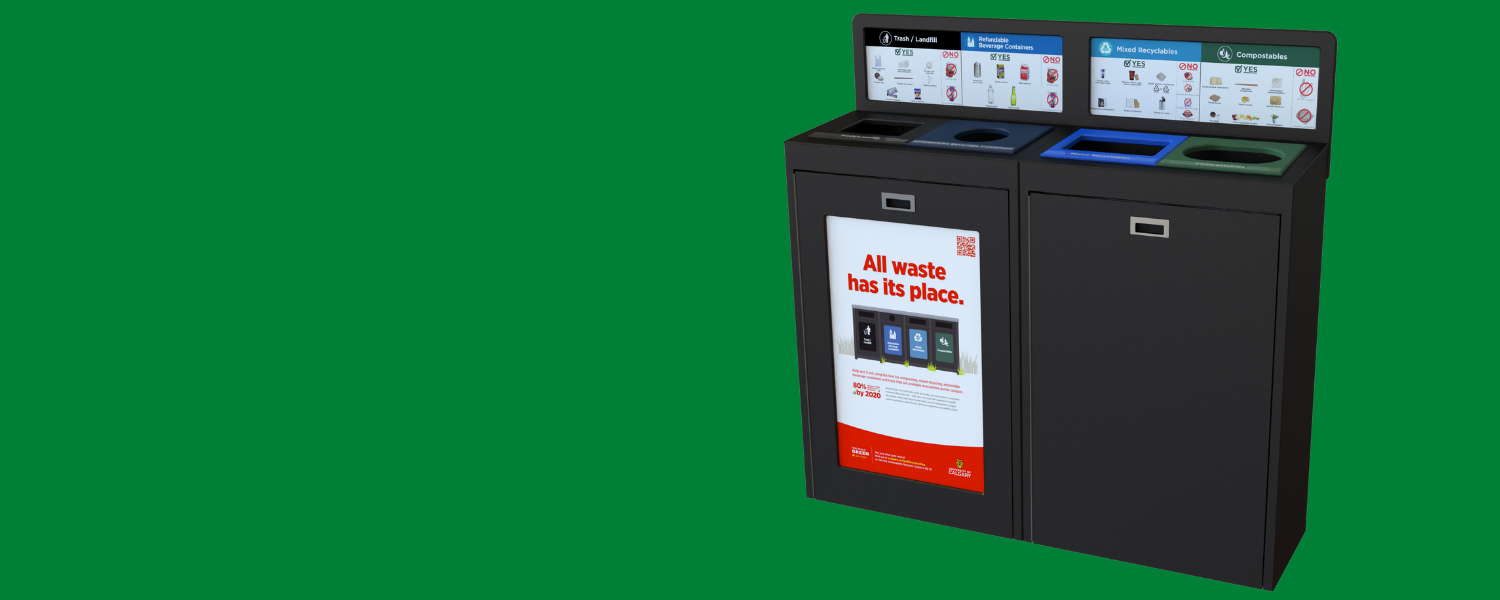
Optimization of Waste Collection Systems at UCalgary
Overview:
As part of our Institutional Sustainability Strategy, UCalgary is striving to become a zero-waste community by demonstrating institutional leadership in waste reduction and minimization. A key part of reducing our campus’ footprint is understanding the various systems which contribute to generating waste and identifying ways to improve upon them. One example is the campus’ waste collection system. UCalgary’s waste is collected from bins and compactors dispersed across campus. In many instances, when trucks come to collect waste, these bins are not full. This requires trucks retrieving the waste to make multiple trips to campus, which is both expensive and results in increased greenhouse gas emissions from the trucks fuel.
Recognizing that UCalgary’s existing waste collection practices presented opportunities for improvement, Samira Farahbakhsh, a student in the MSc in Sustainable Energy Development program devised a project to increase the efficiency of waste collection on campus. To optimize the processes, Samira analyzed the economic, environmental and social aspects of UCalgary’s current waste collection methods and schedules and compared them to waste-collection systems used at other universities.
Outcomes:
- The main recommendation from Samira’s project was that UCalgary should increase the capacity of the compactors and bins to accommodate more waste; and then aggregate the compactors into centralized locations on campus. This would reduce the frequency of the waste haulers visits and the number of trips they would need to make to collect all the waste.
- Samira generated short-term and long-term economic, environmental and social strategies to optimize the waste collection process. Short-term recommendations include:
- Economic: Replacing 8 cubic yard compactors with 8 cubic yard front-loader containers, increasing the size of the bins at the stations to reduce the amount and number of trips required by the trucks per week, adjusting the truck’s pickup schedule during less-busy seasons like spring/summer semesters and adding cardboard balers to collect cardboard and wood pallets to generate new revenue streams. Profits from the carboard and wood collection could later be re-invested in education and infrastructure. Integrating Samira’s suggestions to waste collection practices would result in considerable economic savings and generate new revenue streams on campus.
- Environmental: Reducing the number of trips trucks take to campus and reducing energy use from the compactors lowers GHG emissions
- Social: Using revenues generated from cost savings to invest in waste education initiatives, helping UCalgary work towards its goal of becoming a zero-waste community
Next Steps:
- Investing cost savings from the new waste collection schedule and new compactors into waste education on campus to cultivate a zero-waste community
- Continuing to engage the campus community with learning opportunities on how to reduce and properly sort waste
